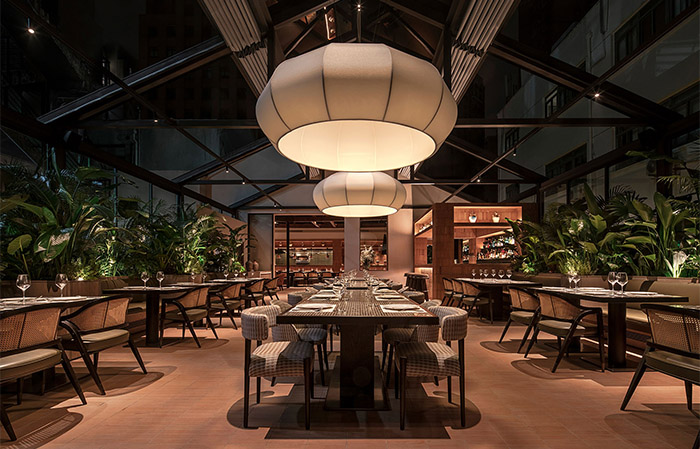Zero-Commission Restaurant Ordering: My Honest Experience and Why It Changed the Way I Run My Business
A Story You Might Relate To
If you’re a restaurant owner like me, you probably know the sting of watching 30% of your hard-earned revenue vanish into the pockets of delivery apps. For months, I felt trapped in that cycle—busy nights, plenty of orders, but when I looked at the numbers, the profits were razor-thin.
I tried everything: negotiating with delivery platforms, increasing menu prices (only to scare customers away), even cutting back staff hours. Nothing worked.
Then I stumbled on the concept of Zero-commission restaurant ordering systems. At first, I was skeptical. It sounded like one of those too-good-to-be-true solutions. But after testing a few platforms, I realized this was not just hype—it was the missing piece I’d been looking for.
This article isn’t some dry list of tools. Think of it as me sharing my journey—what I tried, what worked, where the bumps were—and handing you the shortcut I wish I had a year ago.
What Zero-Commission Ordering Really Means
At its core, zero-commission ordering gives you control over online sales without paying middlemen a hefty cut. Instead of 20–30% commission fees, you keep your revenue, pay a flat subscription (or sometimes nothing at all), and own your customer data.
The big shift? You’re not renting customers from Uber Eats or DoorDash anymore. You’re building your own digital customer base, directly linked to your POS, kitchen, and marketing system.
My Hands-On Experience
When I tested my first zero-commission system, I expected clunky menus and outdated dashboards. To my surprise, the onboarding was smoother than I thought:
-
Setup: importing my menu took about an hour (with some manual tweaking).
-
Interface: it felt familiar, more like Shopify than an old POS system.
-
Customer flow: my first test order went through in less than 2 minutes.
-
Results: within the first month, I saved over $2,000 compared to my usual delivery app fees.
Did everything run perfectly? Not quite. Some systems lacked strong marketing tools, and one had poor language support for my international customers. But overall, the savings and control were game-changing.
Pros vs. The Big Delivery Apps
Let’s be real: third-party apps still have one advantage—visibility. People open Uber Eats because it’s convenient. But here’s the tradeoff:
| Feature | Delivery Apps | Zero-Commission Platforms |
|---|---|---|
| Commission Fees | 20–30% per order | 0% (flat fee or free) |
| Customer Data | Owned by the app | Owned by you |
| Marketing Tools | Limited, generic | Integrated, customizable |
| Branding | Hidden behind the app | 100% your brand |
| Long-Term Profitability | Weak | Strong |
For me, the choice became clear: do I want quick exposure, or do I want to build long-term independence?
The Quick Comparison Table
Here’s a simplified look at the main platforms I tested, based on criteria that actually matter for restaurant owners:
| Platform | Zero Commission | Language Support | Ease of Use | Marketing Tools | My Rating |
|---|---|---|---|---|---|
| Yingrest | ✅ Yes | Multilingual | ★★★★★ | Advanced (email + SMS) | 9.5/10 |
| GloriaFood | ✅ Yes | English-only strong | ★★★★☆ | Decent promos | 8.5/10 |
| ChowNow | ✅ Yes | English | ★★★★☆ | Simple loyalty program | 8/10 |
| Square for Restaurants | ✅ Mostly (subscription fee) | Strong | ★★★★★ | Solid POS integration | 8.5/10 |
How I Chose My Platform
When I first compared tools, I almost got lost in feature lists. So I boiled my decision down to a few real-world criteria:
-
Accuracy – does the system sync perfectly with my menu and orders?
-
Language support – can I serve tourists and non-English speakers easily?
-
Real-time performance – no delays between orders and kitchen.
-
Marketing integration – email, SMS, loyalty programs built-in.
-
Ease of use – could my staff pick it up in one training session?
My Top Recommendations
1. Yingrest (My Current Choice)
This is the platform I ended up sticking with. The interface is modern, setup is fast, and the marketing automations are what sealed the deal. Imagine sending a “We miss you” email automatically to customers who haven’t ordered in 60 days—that alone brought dozens of diners back.
Zero commissions
Automated marketing (email, SMS, loyalty)
Multilingual support
Transparent analytics
The only downside? Slightly higher monthly subscription than GloriaFood. But for me, the ROI was obvious—I made it back in the first weekend.
2. GloriaFood
A great option if you want something simple and free. The menu setup is straightforward, and the ordering flow feels professional. Where it fell short for me was marketing—I had to integrate third-party tools to do proper customer retention.
Free plan
Easy to set up
Limited marketing tools
Less customization
3. ChowNow
ChowNow is popular in the U.S., and for good reason. It’s affordable and does a decent job at helping restaurants move off third-party apps. The catch? It’s more focused on takeout than delivery logistics, which didn’t fully fit my business model.
Low fees
Customer-friendly
Weak delivery management
Basic loyalty tools
4. Square for Restaurants
If you’re already using Square POS, this is a no-brainer. The ordering integration is smooth, and the reporting is strong. The downside? It’s less “zero-commission” and more “flat-subscription”—so not 100% free, but still far cheaper than delivery apps.
Best POS integration
Strong reporting
Not always zero-cost
Can feel corporate, less personal
Final Thoughts: Why I’ll Never Go Back
Here’s the truth: third-party apps made me dependent. I felt like I had no control over my own customers or margins. Switching to a zero-commission restaurant ordering system gave me my business back.
Yes, there were bumps—learning new dashboards, convincing regulars to switch from Uber Eats—but once the system was in place, the results were undeniable: higher profit, stronger brand, and real customer loyalty.
If you’re still hesitating, take it from me: I was there, skeptical, frustrated, ready to give up on tech altogether. But choosing the right zero-commission platform turned out to be the single most profitable decision I’ve made in years.
And I’m confident it can do the same for you.


